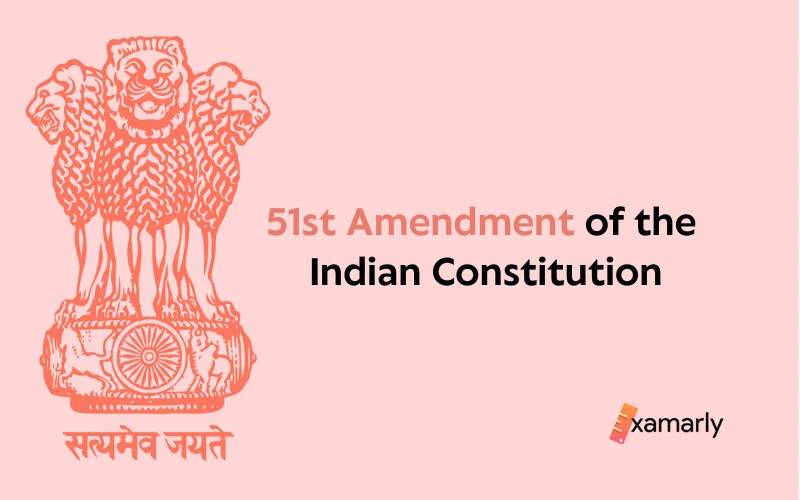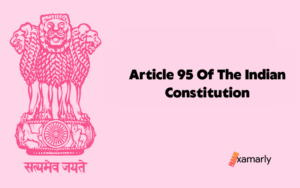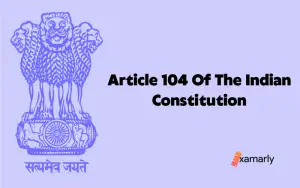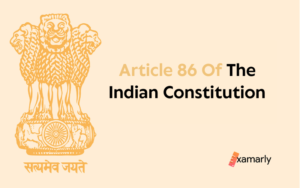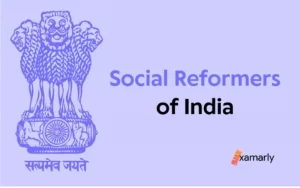The Constitution (Fifty-First Amendment) Act, 1984 is the official name of the 51st Amendment of the Indian Constitution.
51st Amendment of the Indian Constitution grants the reservation of seats for Scheduled Tribes of some states in the Lower House of the Parliament as well as in the Legislative Assemblies.
To be more specific, this reservation is for Scheduled Tribes in Mizoram, Arunachal Pradesh, Meghalaya, and Nagaland, and in the Legislative Assemblies of Nagaland and Meghalaya.
Continue reading this article on the 51st Amendment of the Indian Constitution. This will enable you to learn more about the Indian Constitution and help in your UPSC exam preparation.
- What is the 51st Amendment of the Indian Constitution all about?
- Objects and Reasons
- Major Provisions
- Conclusion
- FAQs related to the 51st Amendment of the Indian Constitution
- When was the Statement of Objects and Reasons presented for the enactment of the 51st Amendment Act?
- Who presented the Statement of Objects and Reasons for the 51st Amendment Act?
- In which year of the Republic of India was the 51st Amendment Act passed?
- Which articles of the Indian Constitution were amended by the 51st Amendment Act?
- The 51st Amendment of the Indian Constitution is concerned with which four North-Eastern Indian states?
What is the 51st Amendment of the Indian Constitution all about?
On April 29, 1985, the 51st Amendment of the Indian Constitution came into effect. The amendment objective of this constitutional amendment was to modify Article 330 and Article 332 of the Indian Constitution. When this amendment was approved, Indira Gandhi was the Prime Minister.
This amendment was passed to ensure that scheduled tribes in Mizoram, Nagaland, Arunachal Pradesh, and Meghalaya, have access to seats in the Lok Sabha.
Also, this amendment grants the reservation of seats for Scheduled Tribes in the Legislative Assemblies of Nagaland and Meghalaya. This was done by suitably changing Articles 330 and 332.
The Indian Constitution has rules for reserving seats for Scheduled Castes and Scheduled Tribes in the Legislative Assembly of any State. This reservation is made under article 332 of the Constitution.
The number of seats reserved for these groups needs to be determined. The determination of these seats needs to be done with regard to the provisions of article 332(3) of the Constitution.
Check out the linked article to learn about the Powers And Functions Of Lok Sabha and Rajya Sabha.
Objects and Reasons
On March 31, 1980, the Meghalaya Legislative Assembly passed a resolution. The resolution encouraged the Government of India to establish reservations for members of the Scheduled Tribes.
The reservation was to be established in both the State Legislative Assembly and the House of the People. Other states throughout India had already set an example for such reservations.
The State Government suggested some amendments to the Indian Constitution. The suggested amendments were for Articles 330 and 332 of the Constitution. The modification to these articles would help establish reservations for members of the Scheduled Tribes.
The governments of Mizoram, Arunachal Pradesh, and Nagaland supported these amendments. The support was with regard to their respective regions.
Article 330 of the Constitution is being suggested for change. This was done to provide for the reservation of seats in the Lok Sabha for the Scheduled Tribes of Meghalaya, Nagaland, Arunachal Pradesh, and Mizoram.
The Legislative Assemblies of Nagaland and Meghalaya would also have a similar reservation under Article 332. To accommodate the needs of the nearby tribal population, changes have been proposed.
This bill aims to do the goal mentioned above.
Related Reading: 50th Amendment of the Indian Constitution
Major Provisions
Amendment of Article 330– 51st Amendment amended Article 330. After the amendment, this article grants the seat reservation for Schedule Tribes(ST) of Nagaland, Arunachal Pradesh, Mizoram, and Meghalaya in the Lok Sabha.
A change was made to Article 330 of the Indian Constitution. This change was made through sub-section (1) of the amendment. The amendment does not affect any current representation in the House of the People.
The current representation will continue until the House of the People is dissolved. The amendment will only take effect after the dissolution of the current House of the People.
Amendment of article 332- Article 333 was amended by the 51st Amendment. After being amended, this article now allows the reservation of seats for the Scheduled Tribes (ST) in the legislative assemblies of Meghalaya and Nagaland.
Until the Legislative Assembly of the State of Meghalaya or the Legislative Assembly of the State of Nagaland that was in existence at the time this Act was enacted is dissolved, the amendment to article 332 of the Constitution made by the above sub-section shall not affect any representation in either assembly.
Also Read: 52nd Amendment of the Indian Constitution
Conclusion
After understanding the details of the Fifty-first Amendment Act, we learnt that it went into effect on April 29, 1985.
This amendment grants seat reservations to Scheduled Tribes of Nagaland, Meghalaya, Mizoram, and Arunachal Pradesh in the Lower House of Parliaments. It also granted them seats in the Legislative Assemblies of the States of Meghalaya as well as of Nagaland.
FAQs related to the 51st Amendment of the Indian Constitution
When was the Statement of Objects and Reasons presented for the enactment of the 51st Amendment Act?
It was presented on August 22, 1984.
Who presented the Statement of Objects and Reasons for the 51st Amendment Act?
It was presented by P. V. Narasimha Rao.
In which year of the Republic of India was the 51st Amendment Act passed?
It was passed in the Thirty-fifth year of the Republic of India.
Which articles of the Indian Constitution were amended by the 51st Amendment Act?
Article 330 and Article 332 of the Indian Constitution.
The 51st Amendment of the Indian Constitution is concerned with which four North-Eastern Indian states?
Mizoram, Arunachal Pradesh, Megahalya and Nagaland.


